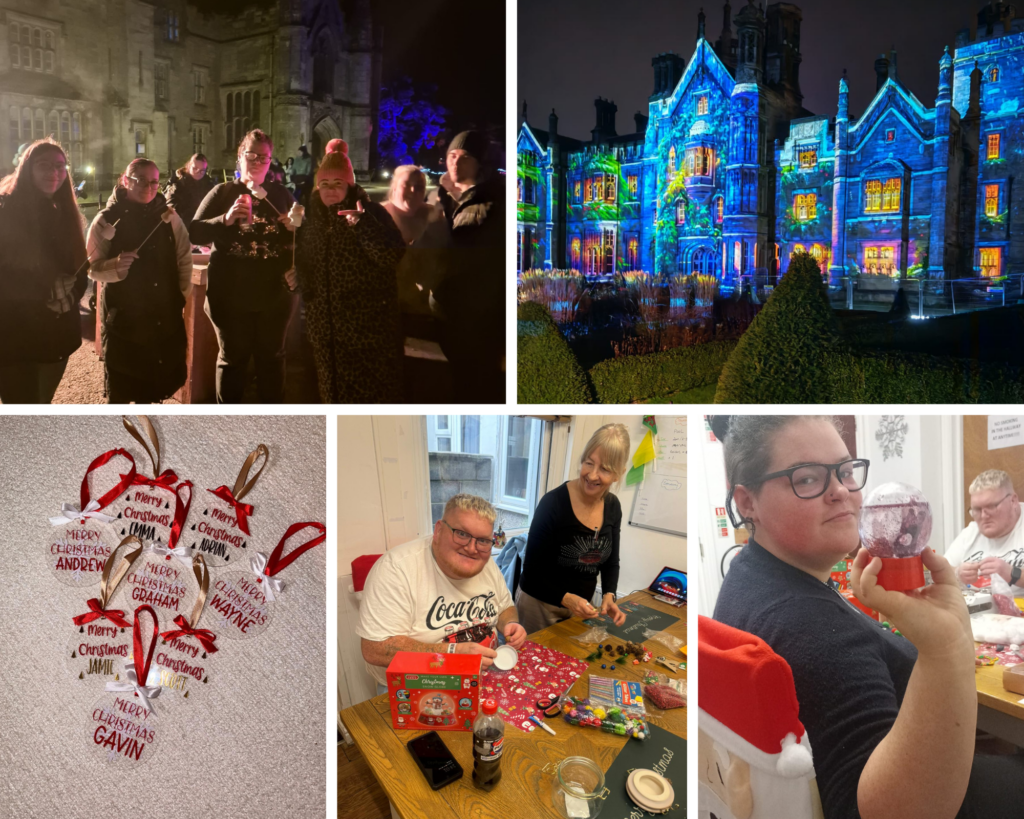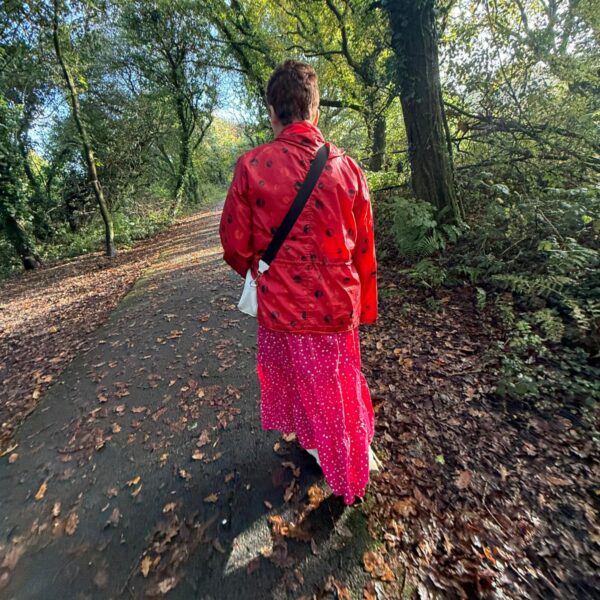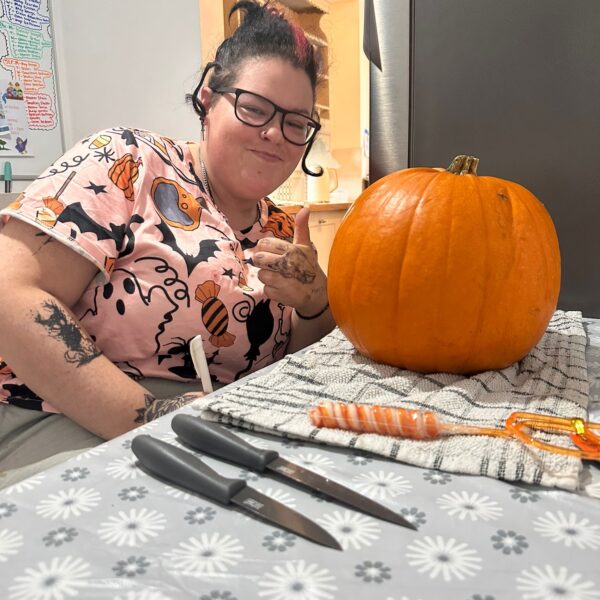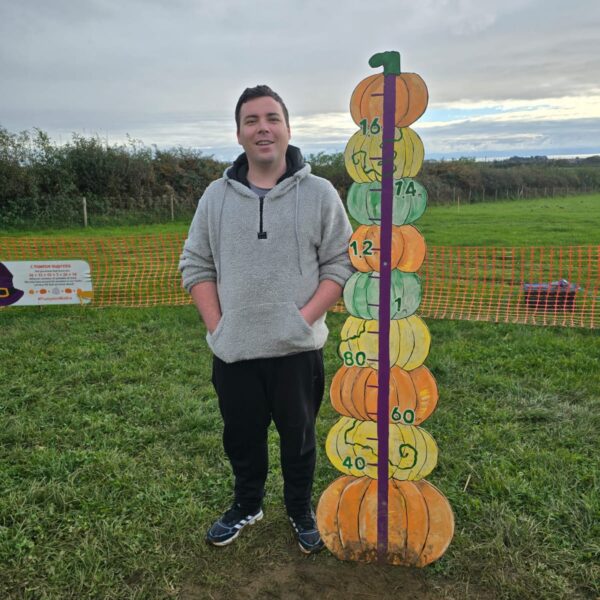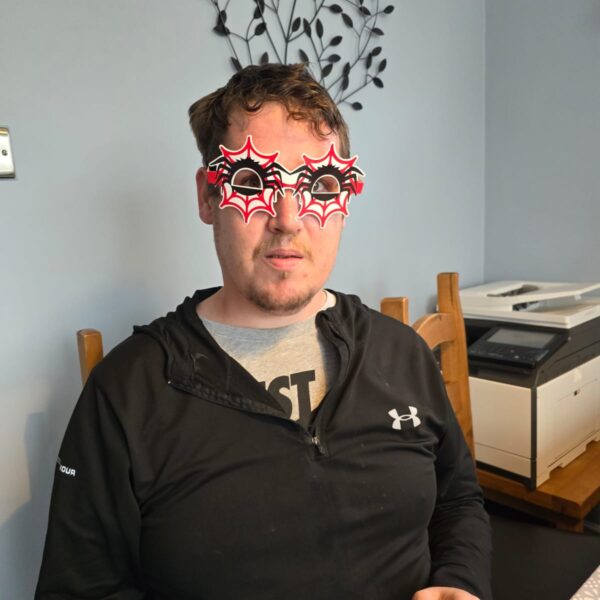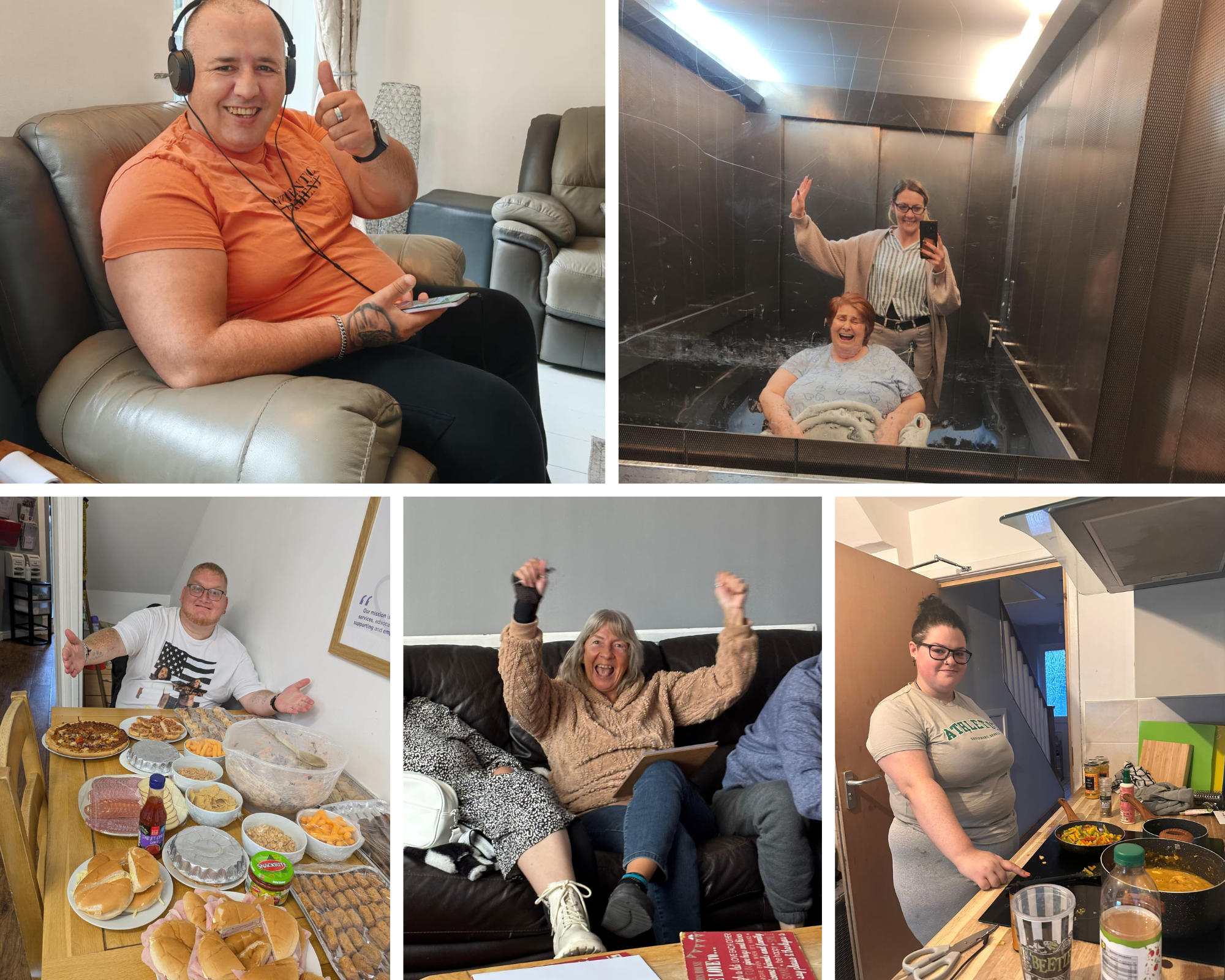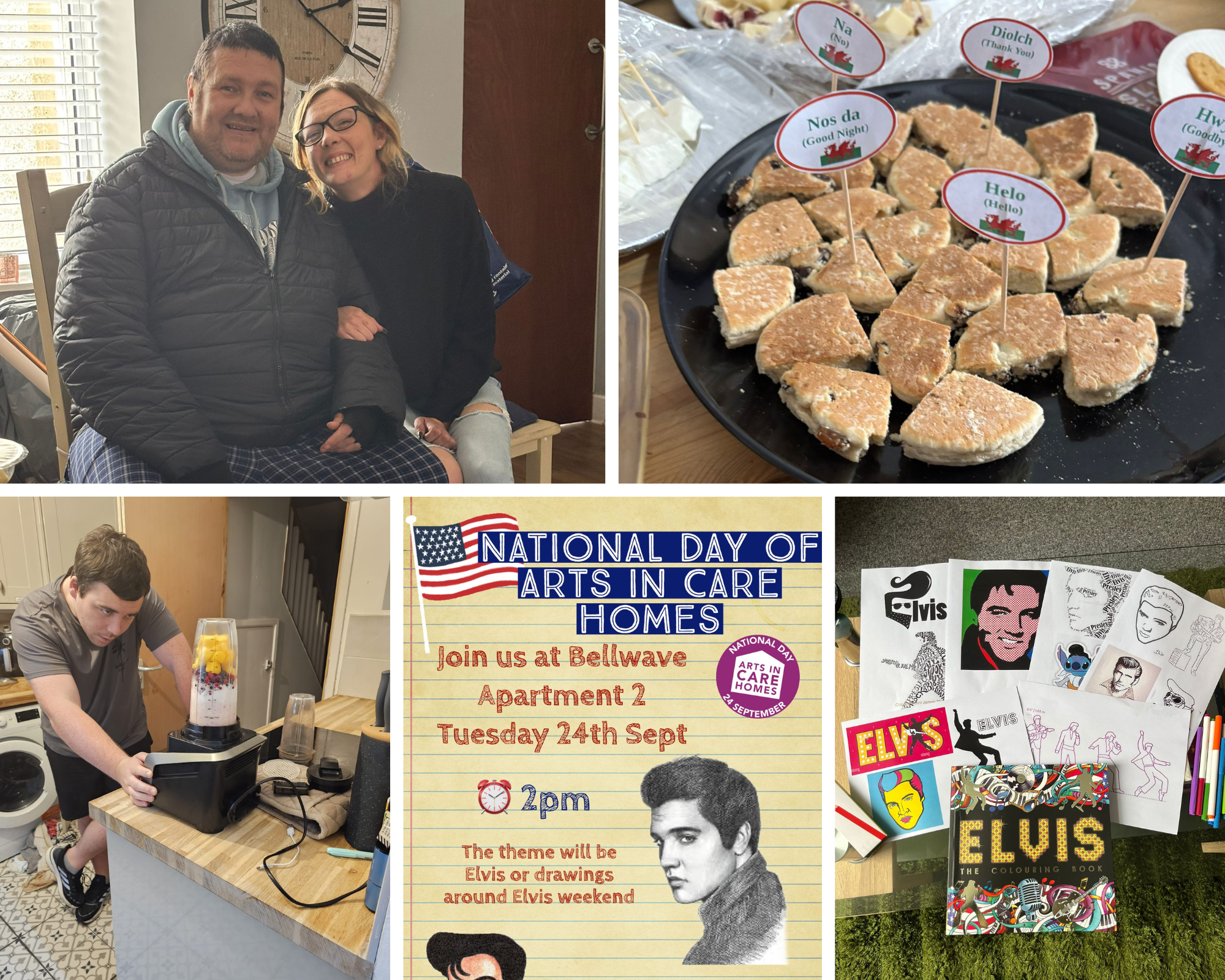

Uncategorised
The Role of Family and Caregivers in Schizophrenia Treatment and Recovery
Introduction
Living with schizophrenia presents challenges that affect not only the individual but also their families and caregivers. The journey toward stability and recovery requires a strong support system built on understanding, empathy, and effective communication.
Families play a vital role in helping their loved ones navigate symptoms, adhere to treatment plans, and build a fulfilling life. At the same time, caregivers must also manage their own well-being to sustain long-term support.
In this article, we explore the many facets of caregiving for individuals with schizophrenia—offering insights into fostering resilience, promoting autonomy, and maintaining a healthy, balanced approach to care. Through a focus on compassion and collaboration, families can become a pillar of strength in their loved one’s recovery journey
Understanding the Diagnosis
The most foundational step to providing meaningful care and support is: understanding.
Receiving a schizophrenia diagnosis can be an overwhelming experience, not just for the individual but also for their family. The condition is complex, often misunderstood, and surrounded by misconceptions.
It’s crucial for families to take time to understand what schizophrenia is—its symptoms, potential triggers, treatment options, and long-term prognosis.
Oftentimes there has been a lot of struggles before a diagnosis is ever given. It’s important to take a moment to reflect and see those struggles through a new lens. It’s at this time when a bit of research will go a long way.
Educating oneself and the broader family circle reduces fear and confusion, creating a foundation for empathy and informed support. Resources such as mental health charities, healthcare providers, and support groups can offer valuable guidance during this process.
The Impact of Stigma

Stigma remains one of the greatest barriers to mental health recovery. Individuals with schizophrenia and their families often face discrimination, which can foster feelings of isolation and shame.
Family members may hesitate to seek help or share their struggles for fear of judgment. It can help to remember that understanding around mental illness, while still lacking, is definitely improving. People have become more accepting of the fact that not all brains function in the same way. Still, stigma and misconceptions can be deeply ingrained, even (and sometimes especially) in those who are most affected by them.
Fighting stigma starts within the home. Families that openly discuss mental health, challenge myths, and emphasise their loved one’s dignity can provide a powerful buffer against external negativity. Over time, this support fosters resilience, encouraging the individual to remain engaged in treatment and social activities.
Establishing a Supportive Environment
A stable, nurturing home environment is essential for individuals with schizophrenia. Routines can provide a sense of predictability, which helps reduce anxiety and prevent episodes. This might include structured meal times, regular sleep schedules, and planned activities to maintain a sense of purpose.
A not-untypical scenario might look like this:
A young woman is living with schizophrenia. Her family discovered that keeping a regular morning routine—breakfast at 8am, followed by a walk around the block—helped her start the day with less agitation. However, there were days when she struggled to get out of bed, her energy drained by negative symptoms such as apathy and fatigue. On those days, her parents learned to gently modify the routine, offering to have breakfast together later or suggesting shorter, less demanding activities. Over time, this combination of structure and compassion helped Sarah feel supported without being overwhelmed by expectations.
For many families, the process of finding that balance involves trial and error. This process is not always smooth and it can put a real strain on the mental wellbeing of the primary caregivers.
Support groups often share similar stories, underscoring that setbacks are normal and that flexibility can prevent feelings of failure for both the individual and the caregivers. Encouraging participation in low-pressure activities, like art or gardening, can offer an outlet for creativity and emotional regulation on more challenging days.
However, flexibility is also important. Mental health can fluctuate, so families should learn to adapt routines to accommodate their loved one’s changing needs. A balance between structure and compassion helps build a calm atmosphere that supports recovery.
Communicating Effectively

Clear, compassionate communication is a cornerstone of effective support. People with schizophrenia may experience cognitive difficulties, including trouble processing information or maintaining focus. Families can help by simplifying conversations, using direct language, and offering gentle reminders.
Effective communication is a deliberate and conscious effort, it requires practice and patience. It is easy to fall into patterns of communication that can be unhelpful. A stressed mind defaults to low resistance patterns of thought. This can sometimes mean letting frustration get the better of us, expectations need to be realistic and empathy should abound.
Active listening is equally important. Instead of rushing to provide solutions, families should listen without judgment, showing empathy and patience. During periods of psychosis or heightened anxiety, communication strategies such as maintaining calm body language and avoiding confrontation can help de-escalate tensions.
Recognising and Managing Triggers
Understanding and managing triggers is a crucial part of preventing relapses. Stress, substance use, and lack of sleep are common triggers for schizophrenia symptoms. Families can work with healthcare professionals to identify specific triggers and develop strategies to mitigate their impact.
Early warning signs, such as withdrawal, increased agitation, or disrupted sleep patterns, should also be monitored. When caught early, intervention can prevent small issues from escalating into a full-blown crisis.
Caregiver Burnout and Self-Care
This is an extremely important section, we realise it can be a sensitive topic but it’s at the core of everything else. An individual suffering with such a debilitating condition such as schizophrenia can have some seriously bad outcomes if the support is not there. The better the support, the better the outcomes, generally speaking of course.
In order to offer the kind of support necessary, the caregiver must be at their best within themselves. This is hard enough to manage without the added challenge and responsibility of caring for someone else. When the person requiring care has a condition as severe as schizophrenia, the difficulty goes up once again.
Caring for someone with schizophrenia can be physically and emotionally taxing. Many caregivers face burnout, which can manifest as exhaustion, irritability, and feelings of hopelessness. It’s vital that caregivers appropriately prioritise their own well-being.
Practices such as regular exercise, socialising, and engaging in hobbies help caregivers recharge. Professional counselling or joining a caregiver support group can also offer valuable emotional support. By taking care of themselves, caregivers are better equipped to provide sustainable care for their loved ones.
The bottom line is that caring for an individual with a complex condition requires you to be “switched on” a lot of the time. This in itself can be exhausting. Recognising the importance of giving yourself time to “recharge” is crucial.
Balancing Autonomy and Support
While people with schizophrenia may need assistance, maintaining their autonomy is crucial for long-term recovery. Over-reliance on family members can hinder the development of coping skills and self-esteem.
Families should encourage their loved one to make decisions about their treatment and daily life, even if those decisions seem small. Offering choices—such as what to eat, how to spend time, or which activities to pursue—fosters a sense of control and independence.
Crisis Management

Despite best efforts, crises may occur. Episodes of acute psychosis or severe distress require a clear plan to ensure safety. Families should work with healthcare providers to develop a crisis plan, which may include emergency contact numbers, medications, and de-escalation strategies.
Preparation can make crises less overwhelming. By rehearsing scenarios and discussing the plan with all household members, families can respond more effectively when urgent situations arise.
Emotional Healing and Forgiveness
Schizophrenia can strain family relationships, particularly when symptoms lead to misunderstandings or hurtful behaviour. Rebuilding trust after challenging episodes takes time and patience.
Families can promote healing by acknowledging the difference between the person and their symptoms. Open conversations about forgiveness, boundaries, and emotional needs can help repair fractured relationships, allowing both the individual and their family to move forward together.
The Importance of Patience and Long-Term Commitment
Recovery from schizophrenia is a marathon, not a sprint. Symptoms may ebb and flow over time, and setbacks are normal. Families that understand this long-term perspective are better able to provide consistent support without becoming discouraged by temporary relapses.
Maintaining hope, flexibility, and realistic expectations helps create an environment where gradual progress can be celebrated. Families should remind themselves that every small step forward—whether it’s sticking to a routine or attending therapy sessions—is a victory.
Conclusion: How Serendipity Care Supports Families and Individuals
At Serendipity Care, we understand the challenges families face when supporting a loved one with schizophrenia. Our mission is to provide a safe, caring, and supportive environment that empowers individuals to reach their full potential. Through our residential homes, supported living accommodations, and domiciliary care services, we offer comprehensive, person-centred care based on the recovery model.
Our team works closely with families, commissioners, and healthcare providers to ensure that both mental and physical health needs are met. By creating a homely, nurturing atmosphere, we aim to support each person’s journey toward stability and growth. Together, we can build a brighter future for individuals living with schizophrenia and their loved ones.
If you’d like to learn more about our services, please reach out to us today. Let’s walk the path of recovery, side by side.
List of resources:
https://livingwithschizophreniauk.org/
https://www.nhs.uk/mental-health/conditions/schizophrenia/living-with/
Highlights from January 2025
Sponsors of local club
We are thrilled to announce that Serendipity Care and Support are now the proud main sponsor of Mynydd Cynffig ABC, a local gym dedicated to promoting strength, discipline, and wellness in our community.
This sponsorship reflects our commitment to supporting active, healthy lifestyles and fostering a strong sense of community.
New role for Dionne Parry

Dionne Parry
A big congratulations to Dionne Parry who has taken on a new role as Assistant Finance / Admin.
Dionne joined Serendipity in August 2022 after gaining experience in Supported Living Services. With a Level 3 diploma in holistic therapies, she values the supportive environment.
In her new role as Admin Finance/Office Assistant, Dionne enjoys greater work-life balance and time with family. She looks forward to completing AAT training and further developing her skills.
Staff Spotlight

Paiton Clarke
Meet Paiton Clarke, our new Psychologist Assistant. Since joining Serendipity in 2019 as a 17-year-old office administrator, she has earned a First-Class BSc in Criminology and an MSc in Psychology.
With experience supporting victims of domestic violence and working with paediatric clinical psychologists, Paiton is committed to social justice and mental health.
Latest Home News
Bellwave House
January has been a time of renewed hope and energy for both residents and staff. Our regular events have been well-attended, with the quiz continuing to be a highlight for many.
To mark ‘Blue Monday,’ known as the most depressing day of the year, residents and staff gathered for a walk along Porthcawl beach. We took time to enjoy each other’s company over coffee, sharing positive conversations and discussing ways to support mental well-being.
The day was a reminder of how important it is to stay connected and engage in activities that uplift our spirits.
At Bellwave House, one resident, WS, has made remarkable progress in gaining independence. After moving in from a locked rehabilitation home just four months ago, WS has now been assessed as ready to transition to supported living.
He recently toured his new home at Bellwave Sands with House Manager Hannah Clifton and was impressed by the property, looking forward to this next chapter in his journey.
Bellwave Apartments 1
TC has begun a Managing Anxiety course with Adult Learning Wales and TC has found it to be highly beneficial. He is applying the insights gained to better manage his own experiences.
VJ has been enjoying her regular outings, which include shopping trips and nature walks.
Bellwave Apartments 2
Apartment 2 has been full of fun with Mario Kart tournaments and “Fakeaway Fridays,” where residents take turns cooking healthy meals like curries and pasta.
ND is back to football after the break and recently visited Old Trafford with activity co-ordinator Mark Williams, fulfilling a lifelong dream.
SD has been teaching guitar to Mark and other residents. He’s excited for his birthday trip to Cardiff and an AC/DC tribute show in February.
MD is settling in well, enjoying a trip to Porthcawl, improving his cooking, and playing Mario Kart. He’s also having friendly football banter with ND as a Liverpool fan!
Bellwave Drive
At Bellwave Drive, residents joined a Blue Monday walk along the Porthcawl seafront, spending time with others from different projects and finishing off with hot drinks. It was a great way to lift everyone’s spirits.
JEP celebrated his 21st birthday with a party at the Drive, featuring music, quizzes, plenty of food, and a birthday cake.
He had a wonderful time and expressed his gratitude to everyone who came to celebrate with him.
AE enjoyed the Blue Monday walk and has embraced the new year with regular walks, sauna visits, and swimming. She also participated in a group session on online safety, led by local police, a mental health nurse, and an OT.
PM is off to a good start this year, setting weight-loss goals by incorporating small walks and dietary changes.
He’s also been keeping active around the house and garden and enjoyed preparing Sunday lunch for himself and the other residents.
Bellwave Cottage
Lee-Ann Evans has joined the Cottage as the new activities coordinator.
MB is back at Slimming World with a positive mindset, enjoying friendly competition with Lee-Ann. He continues to thrive in his volunteering role, helping with collections and deliveries, and has started a journal to reflect on key moments and maintain well-being.
PW has had a great start to the year, spending quality time with his dad over three-course meals and taking part in the Blue Monday event with friends, enjoying coffee and a beach dog walk.
TM is focusing on healthy eating and a new routine. He works out weekly with MB at the gym and pool, with both supporting each other in cooking meals. TM also continues his maths and English studies at the Bridge Hub.
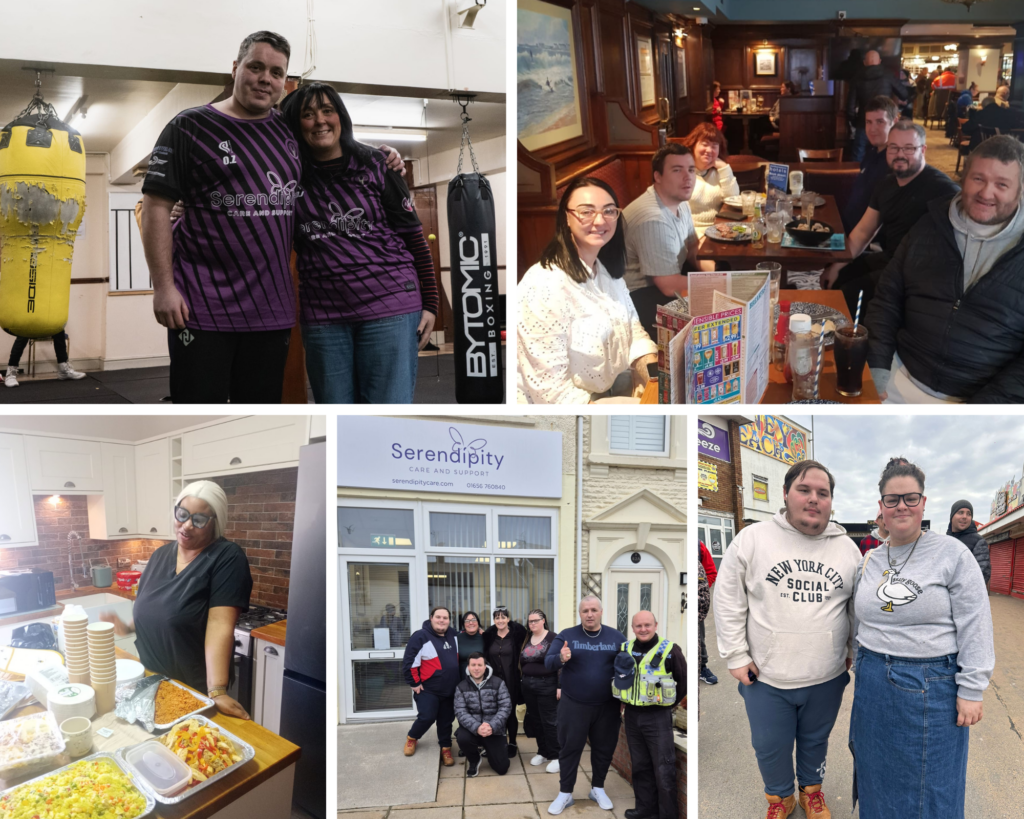 Bellwave Corner
Bellwave Corner
We’ve beaten the “January Blues” at the Corner with plenty of nature and beach walks!
This month was full of celebrations. We marked JEP’s 21st birthday at Bellwave Drive, and MF and NW celebrated their 51st and 41st birthdays on January 19th with a meal at Wetherspoons.
NL enjoyed a fun trip to the park, while DW bravely got his nose pierced. DW has also been busy cooking meals like cottage pie and stew and creating a journal to track his goals.
Highlights from December 2024
Christmas Celebrations
Over the Christmas season, our residents at Serendipity had a great time enjoying lots of fun activities together. Whether it was decorating the home, sharing stories over a warm cup of tea, or getting stuck into festive games, there was always something to look forward to.
What made it even better was having family and friends visit, filling the homes with laughter and love.
Employee of the Quarter

A big congratulations to our Senior Support Worker, Elisabeth James, on being awarded Employee of the Quarter! Since joining us in February 2024, Elisabeth has shown remarkable dedication and achieved so much.
Hayley and Mark would like to thank her for always going the extra mile—no task is too big or too small. Well done, Elisabeth, and thank you for being such a valued member of our team!
Latest Home News
Bellwave House
December was an exciting month for the residents of Bellwave House, made even more special by the festive Christmas and New Year activities.
A highlight was a Christmas meal at The Salt Water Inn, generously hosted by our RI, Tracy Wyllis, and the Serendipity Directors. Both residents and staff thoroughly enjoyed the experience, so a big thank you to Tracy and the Directors for making it possible.
Residents also participated in several enjoyable events throughout the month, including pumpkin picking, snow globe making, Christmas shopping in Swansea, and relaxing with tea and mince pies.
We are especially proud of our resident GW, who has made outstanding progress towards independence since arriving at Bellwave House. His psychiatrist has agreed to support him in regaining his driving licence, and GW is now planning to purchase a new van in the new year with hopes of returning to work as a plasterer.
This is a remarkable achievement, considering GW was previously in a low secure psychiatric facility before coming to Bellwave House.
Bellwave Cottage
It has been a busy and festive month at the Cottage, with residents enjoying Christmas shopping and a fun visit to Swansea Winter Wonderland with SD. Everyone who could make it gathered for a Christmas meal at The Red Dragon, a favourite among residents, and a great time was had by all.
The residents would like to thank everyone involved in their support for making this past year positive and rewarding.
TM spent Christmas with family, which was a wonderful experience, and is ready to start the new year with a positive outlook. PW and MB celebrated Christmas together, exchanging gifts, cooking a delicious lunch, and relaxing in front of the TV.
MB spent New Year’s Eve with his sister and her family, marking his first time celebrating away from the Cottage. Meanwhile, PW and TM welcomed in 2025 together.
Bellwave Drive
Residents at Bellwave Drive had a fantastic time preparing for the festive season, helping staff put up Christmas decorations and getting into the holiday spirit. They enjoyed completing their Christmas shopping for family and exchanged gifts with each other before heading home to celebrate with loved ones.
An afternoon was spent making personalised snow globes, which residents took home as keepsakes. They also gathered in the communal lounge to watch Christmas classics like Elf and The Grinch and shared a special evening watching the Gavin and Stacey finale.
A memorable event was the trip to Margam Park for the Luminate Lights. Residents, joined by Bellwave Corner and RI Tracey, enjoyed the stunning displays, interactive light games, and festive treats, including toasted marshmallows by the fire. The evening was a huge success, and they hope to visit again next year.
On Christmas Day, residents spent time with family and later shared stories about their day. They were delighted their gifts were well received and enjoyed the thoughtful presents they received in return.
Bellwave Apartments 1
Residents and staff at Bellwave Apartments 1 enjoyed the festive season with a Christmas meal at the Royal Oak and a lively party with a buffet and gift exchange. They also took part in Christmas Jumper Day, raising £50 for Dave the Children—a wonderful way to spread holiday cheer together.
Bellwave Apartments 2
It’s been a festive month at Apartments 2, where residents helped raise over £50 for Save the Children during Christmas Jumper Day. A joint Christmas party with Apartment 1 featured a buffet, festive treats, and gifts for everyone.
SD has been continuing with his guitar playing and performed during both the Christmas Jumper Day event and the party. ND is excited to visit Old Trafford to watch Manchester United, something he’s been looking forward to for a long time, and is eager to return to playing football in the new year. MD has settled in well, enjoying caring for his new fish and making homemade smoothies and milkshakes.
Bellwave Corner
All residents enjoyed the Christmas festivities, including shopping for presents. Most spent the holiday period with family, returning with fond memories. Residents also reflected on the year and completed their New Year’s resolutions. DW continues to enjoy weekly rock climbing sessions, gaining confidence with each visit.
Staff and residents shared a lovely Christmas meal at Cheetahs in Porthcawl, where Santa made a surprise appearance. DW and MF had a fun-filled day at Swansea Winter Wonderland, enjoying ice skating, bumper cars, games, and festive food. They also explored the Swansea National Waterfront Museum during their visit.
Physical Health and Schizophrenia
Introduction
When we think of schizophrenia, the focus often centres on its profound impact on mental health. However, this complex condition also significantly affects physical health, often in ways that go unnoticed.
People with schizophrenia are more likely to face physical health challenges than the general population, leading to reduced life expectancy, poorer quality of life, and an increased burden on healthcare systems.
In this article, we’ll explore the physical health risks associated with schizophrenia and discuss how an integrated care approach can improve outcomes for individuals living with the condition.
Physical Health Challenges in Schizophrenia
The Scope of the Problem
People with schizophrenia live, on average, 10 to 20 years less than those without the condition1. This striking statistic isn’t solely due to mental health struggles; physical illnesses are a major contributing factor. Research shows that over 75% of individuals with schizophrenia have at least one chronic physical condition, such as diabetes, cardiovascular disease, or respiratory disorders2.
These challenges often arise earlier in life compared to the general population. For example, individuals aged 25–44 with schizophrenia are five times more likely to experience heart problems than their peers3.
Common Physical Health Conditions

Obesity and Related Complications
Obesity is one of the most pressing health concerns for individuals with schizophrenia. Linked to poor diet, sedentary lifestyles, and the side effects of antipsychotic medications, weight gain often leads to other health problems like heart disease, diabetes, and certain cancers4.
Antipsychotics such as Olanzapine and Clozapine are known to cause significant weight gain, while newer medications like Aripiprazole and Asenapine have fewer effects on weight5. However, the issue isn’t solely medication-related; studies have shown that people with schizophrenia tend to consume diets higher in sugar and fat, with lower intake of fruits, vegetables, and fibre6.
Cardiovascular Disease

Heart disease and stroke are twice as common in individuals with schizophrenia as in the general population7. These conditions are exacerbated by smoking, poor diet, and inactivity, all of which are prevalent in this group.
Diabetes
Diabetes is more common among people with schizophrenia, with antipsychotic medications playing a potential role by altering the body’s use of insulin. Interestingly, outcomes for individuals in developing countries—where physical activity through farming or other labour is common—tend to be better, suggesting lifestyle factors like exercise may help mitigate risk8. Emerging research has also proposed a genetic link between schizophrenia and diabetes9.
Respiratory Disorders and Smoking
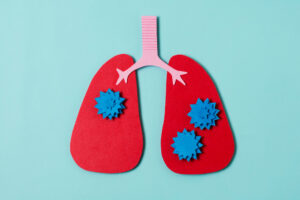
Approximately 70% of individuals with schizophrenia are smokers, compared to just 25% of the general population10. Smoking not only increases the risk of respiratory diseases but also interacts with medications, reducing their effectiveness and necessitating higher doses, which can worsen side effects like weight gain.
Bone Health
Conditions like osteoporosis are more prevalent in individuals with schizophrenia, linked to a sedentary lifestyle and, in some cases, elevated levels of the hormone prolactin caused by antipsychotics. High prolactin levels can weaken bones over time, making regular monitoring essential11.
The Role of Exercise in Schizophrenia
Exercise and Physical Health
Regular exercise plays a pivotal role in reducing the risk of chronic illnesses associated with schizophrenia. For instance:
- Heart Disease and Diabetes: Exercise is one of the most effective ways to reduce the risk of heart disease and diabetes, particularly for individuals with schizophrenia who are already at an increased risk due to lifestyle factors, medication side effects, and higher rates of obesity12. Regular physical activity helps the body regulate insulin levels, which is essential for controlling blood sugar and preventing type 2 diabetes. For people with schizophrenia, whose antipsychotic medications may alter the body’s ability to manage insulin effectively, this is especially important.
Moreover, exercise strengthens the heart muscle, improves blood circulation, and lowers levels of harmful cholesterol while increasing levels of “good” cholesterol. Even moderate aerobic activities such as brisk walking or cycling for 30 minutes a day, five days a week, can significantly reduce the likelihood of developing heart disease, regardless of weight loss12.
The benefits extend to reducing inflammation, improving arterial flexibility, and maintaining healthy blood pressure—all crucial factors in preventing cardiovascular issues. For individuals unable to engage in high-intensity workouts, low-impact exercises like swimming or yoga can still provide significant cardiovascular benefits without undue strain.
- Bone Health: Osteoporosis, a condition characterised by weakened bones, is more common in individuals with schizophrenia, particularly due to sedentary lifestyles and medication side effects11. Certain antipsychotics can elevate prolactin levels, a hormone that, when too high, can lead to reduced bone density over time. This risk, coupled with a lack of regular physical activity, creates a pressing need for targeted interventions to protect bone health.
Weight-bearing exercises, such as walking, dancing, and resistance training, are particularly effective in strengthening bones. These activities work by applying stress to the bones, which stimulates the bone-building cells and helps maintain or even increase bone density. Resistance training, such as using free weights or resistance bands, is especially beneficial as it combines muscle strengthening with joint stability, further reducing the risk of fractures.
- General Fitness: Regular physical activity is vital for improving overall fitness levels, which includes cardiovascular health, muscle strength, flexibility, and stamina12. For individuals with schizophrenia, who may lead more sedentary lives due to the negative symptoms of the condition (such as apathy and low motivation), even small increments in physical activity can have profound effects on physical and mental health.
Aerobic activities such as jogging, swimming, or cycling enhance cardiovascular fitness by strengthening the heart and lungs, which improves oxygen delivery throughout the body. This leads to reduced blood pressure and a lower resting heart rate—both markers of improved cardiovascular health.
Resistance training, including bodyweight exercises or gym-based strength training, boosts muscular strength and endurance. Stronger muscles support joints, improve posture, and enhance overall mobility, making daily tasks easier and less physically taxing.
Flexibility exercises, such as yoga or stretching routines, can improve joint range of motion, reduce stiffness, and minimise the risk of injury. Additionally, these exercises often provide mental health benefits, such as stress reduction and improved relaxation, which are particularly helpful for individuals with schizophrenia.
Exercise and Mental Health

The benefits of exercise extend beyond physical health, offering improvements in mental and psychological well-being:
- Negative Symptoms: Exercise has shown promise in alleviating negative symptoms like apathy, lethargy, and social withdrawal13.
- Cognitive Benefits: Some studies suggest exercise can enhance memory and cognitive functioning, although further research is needed13.
- Auditory Hallucinations: Anecdotal evidence indicates that exercise may help reduce the distress caused by hallucinations, possibly through distraction and focus14.
- Psychological Well-Being: Exercise is linked to reduced stress, better sleep patterns, improved self-esteem, and a greater sense of relaxation15.
Improving Physical Health Care
Proactive Monitoring and Intervention
Care homes and healthcare providers play a crucial role in bridging the gap between mental and physical health care. Regular health checks focusing on blood pressure, blood sugar levels, and heart health are essential. Early intervention in these areas can drastically improve life expectancy and quality of life.
Promoting Healthy Lifestyles
Encouraging physical activity, improving diet, and offering smoking cessation support are critical components of integrated care. For example, studies show that even modest increases in physical activity can significantly reduce the risk of heart disease and diabetes, regardless of weight loss12.
Tailored Medication Management
Where possible, prescribing antipsychotics with fewer metabolic side effects can help reduce weight gain and other associated health risks. Regular discussions with healthcare providers about side effects and medication adjustments are important5.
Holistic and Integrated Care Models
An integrated approach to care—bringing together mental health, physical health, and social services—ensures that individuals with schizophrenia receive comprehensive support. This includes not only managing health conditions but also addressing barriers to care, such as stigma and socio economic challenges16.
Conclusion
Schizophrenia profoundly affects both the mind and the body. By recognising and addressing the physical health risks associated with the disorder, care providers can help individuals live longer, healthier, and more fulfilling lives. At our care home, we are committed to supporting the whole person, ensuring that physical health is never overlooked.
If you’d like to learn more about how we approach integrated care for individuals with schizophrenia, please don’t hesitate to get in touch. Together, we can build a brighter future for those living with this challenging condition.
References
- Healthcare Quality Improvement Partnership, 2014, Second National Audit of Schizophrenia: What You Need to Know.
- Mitchell A, Malone D, 2006, Physical Health and Schizophrenia, published in Current Opinion in Psychiatry.
- Penedo F, Dahn J, 2006, Exercise and Wellbeing: A Review of Mental and Physical Health Benefits Associated with Physical Activity, published in Current Opinion in Psychiatry.
- Chesney E, Goodwin G, Fazel S, 2014, Risks of All-Cause and Suicide Mortality in Mental Disorders: A Meta-Review, published in World Psychiatry.
- De Hert M, et al., 2011, Physical Illness in Patients with Severe Mental Disorders, published in World Psychiatry.
- Peet M, 2004, Diet, Diabetes and Schizophrenia: Review and Hypothesis, published in The British Journal of Psychiatry.
- Lancet, 19th February 2011.
- Jurczyk A, et al., 2015, Beyond the Brain: Disrupted in Schizophrenia 1 Regulates Pancreatic β-cell Function via Glycogen Synthase Kinase-3β, published in The Journal of the Federation of American Societies for Experimental Biology.
- Fuller Torrey E, 2013, Surviving Schizophrenia, Harper Perennial.
- Faulkner G, Taylor A, 2005, Exercise, Health and Mental Health, Routledge.
- Warner R, 2000, The Environment of Schizophrenia, Brunner Routledge.
- Firth J, et al., 2015, A Systematic Review and Meta-Analysis of Exercise Interventions in Schizophrenia Patients, published in Psychological Medicine.
- Kimhy D, et al., 2015, The Impact of Aerobic Exercise on Brain-Derived Neurotrophic Factor and Neurocognition in Individuals With Schizophrenia: A Single-Blind, Randomised Trial, published in Schizophrenia Bulletin.
- Author’s personal experiences.
- Burton N, 2012, Living with Schizophrenia, Acheron Press.
- Eaton W, et al., 2006, Association of Schizophrenia and Autoimmune Diseases, published in The American Journal of Psychiatry.
Highlights from November 2024
Recent Staff Forum
At Serendipity Care, our recent staff forum provided a valuable opportunity to reflect on our core values, company culture, and communication practices together.
It was an engaging session that reinforced our shared commitment to upholding the values that define Serendipity Care and ensuring open, effective communication across all levels of our organisation.
Staff Spotlight
Over the past month, Bellwave House has warmly welcomed three new staff members, all of whom are settling into their roles seamlessly.
Our new team leader, Shane Edwards, has also been finding his stride in the position. Reflecting on joining the team, Shane shared, “I’ve felt truly welcomed by both residents and staff, and I’m excited to take on the challenges ahead.”
We’re grateful to DW and NW for their fantastic support during recent interviews.
Their involvement brought valuable perspectives to the process, and their contributions were greatly appreciated.
In between interviews, they enjoyed some downtime watching The 1% Club and were treated to a chippy lunch as a small thank-you for their efforts.
Their assistance was greatly appreciated!
Bellwave House
Over the past month, residents at Bellwave House have enjoyed a mix of regular activities and special celebrations.
Bonfire Night was a highlight, with sparklers, coffee, and cake bringing everyone together for a cosy evening. Regular activities like pool and quizzes also kept spirits high throughout the month.
November was a month of celebrations, including birthdays for AD and AH, both of whom enjoyed a treat of a chippy lunch to mark their special days.
Our newest resident, WS, has been settling in exceptionally well. Since his arrival, he has grown much more comfortable in his new surroundings and is engaging with staff more actively. One of WS’s favourite routines is going out daily with staff for breakfast, which he thoroughly enjoys. It’s wonderful to see him feeling at home!
 Bellwave Corner
Bellwave Corner
It’s been a busy and engaging month at The Corner as we celebrated several National Days together. National Kindness Day saw us playing a kindness quiz, sharing kindness tips, and pulling names from a jar to say something kind about each person.
On National Play Monopoly Day, we embraced the spirit of the day by enjoying a lively game of Monopoly.
For National Stop Violence Against Women Day, we learned important facts and played games like “Guess the Female Lead Film” and “Guess the Celebrity,” focusing on women who have survived violence or domestic abuse.
MF and DW also attended a Mental Health First Aid Course at the YMCA in Porthcawl. Both found the experience educational and rewarding.
Meanwhile, Christmas spirit has arrived early at The Corner! We’ve started putting up decorations, and while some might say it’s a bit soon, everyone here is fully embracing the festive mood.
Looking ahead, we’re planning a Christmas shopping trip, a visit to Winter Wonderland, and plenty of other holiday activities to keep the celebrations going!
Bellwave Drive
It’s been another busy and exciting month for all residents, filled with a variety of activities. Amelia has fully embraced the festive spirit, enjoying decorating gingerbread houses and listening to Christmas songs.
She also welcomed a new pet hamster, Athena, who has settled in wonderfully in her bedroom. Amelia has been growing more confident each day and is clearly enjoying her time with Athena.
PM and JEP have also been getting into the Christmas spirit, enjoying shopping for gifts and spending time choosing presents for their families and loved ones. The festive cheer is truly in full swing!
 Bellwave Apartments 1
Bellwave Apartments 1
Our new resident, TC, has been settling in wonderfully. He’s been enjoying exploring the community, both independently and with support from staff.
This month, apartment residents also participated in Road Safety Week, organised by our Activities Coordinator, Victoria. She put together a quiz to test everyone’s road safety knowledge, which was both fun and informative!
Bellwave Apartments 2
It’s been a settled and enjoyable month at Apartments 2. We welcomed a new resident, MD, who is settling in wonderfully and already planning to get some pet goldfish to make his space feel more like home.
This month, we also said goodbye to our fantastic Support Worker and Activity Coordinator, Dionne Parry, who has moved to a new role in the office. Dionne will be greatly missed, but we wish her all the best in her new position.
ND has started attending street football again and is thoroughly enjoying being back in the game.
SD continues to delight in playing his guitar and immersing himself in music. He recently enjoyed a trip to Cardiff for some shopping and a visit to the music store. SD has also been busy creating customised jackets featuring his favourite bands.
With Christmas just around the corner, we’re all excited about the upcoming festivities and activities to celebrate the season!
Neurodiversity
1. Introduction: Understanding Neurodiversity
Neurodiversity is a concept that has gained significant traction in recent years, transforming how we view and value the vast array of brain types. It challenges the traditional notion of a single “normal” or “typical” way of thinking and behaving, emphasising instead that cognitive differences are natural variations in the human population.
This perspective seeks to move away from pathologising certain conditions. Instead, “Neurodiversity” focuses on understanding and celebrating diversity of experience.
The term encourages society to recognise that brains process information differently, and these differences bring unique strengths alongside potential challenges.
For many, neurodiversity is not just a medical term but a call for a cultural shift—one that prioritises inclusivity, understanding, and accommodations to alter environments so that all individuals can thrive.
2. Origins of the Term “Neurodiversity”
The term “neurodiversity” was first coined in the late 1990s by Judy Singer, an Australian sociologist who is autistic. Singer’s work aimed to reframe societal attitudes towards autism and other neurological conditions. She did this by focusing on the idea that these differences should be valued rather than seen solely as deficits.
The movement aligned with the broader social model of disability, which asserts that individuals are disabled not by their conditions but by societal barriers that fail to accommodate them.
Singer’s concept gained momentum in advocacy circles and gradually spread to mainstream discourse. It resonated with the experiences of many who felt marginalised by systems designed primarily for neurotypical individuals.
Today, neurodiversity serves as a rallying cry for greater acceptance and understanding, highlighting that different brain types enrich communities and organisations.
3. What Is Neurodiversity?
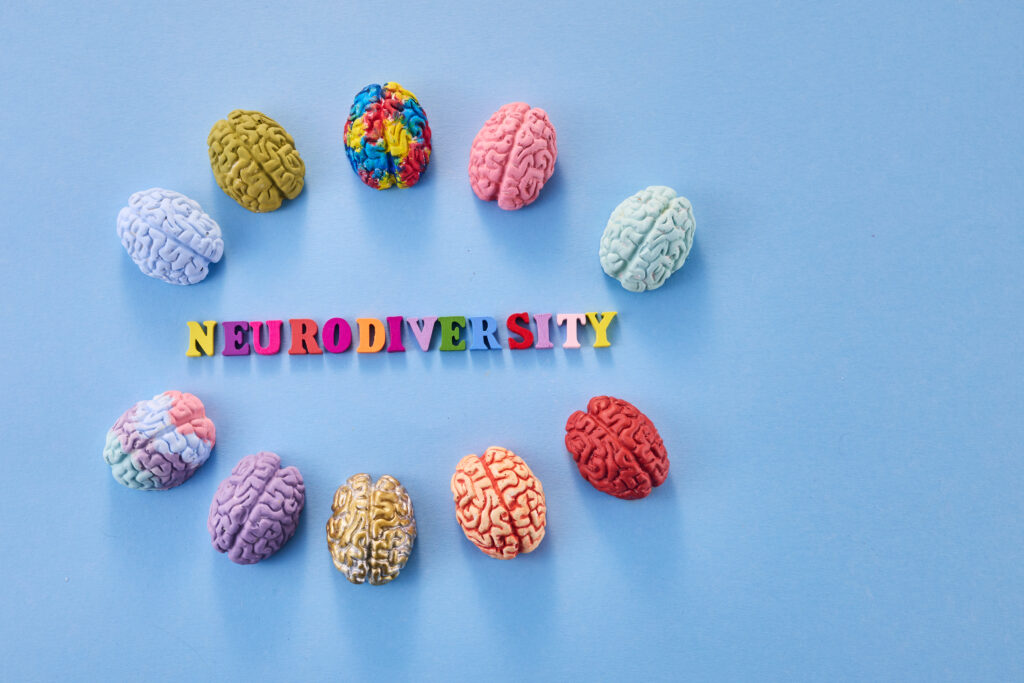
Neurodiversity is an umbrella term that encompasses a wide range of neurological differences, such as autism, ADHD, dyslexia, dyspraxia, and more. It is not a diagnosis but a framework for understanding that these conditions are part of natural human variation.
Instead of viewing these differences as disorders to be “fixed,” neurodiversity encourages society to appreciate the distinct ways individuals think, learn, and interact with the world.
At its core, neurodiversity is about recognising the spectrum of cognitive functioning. Just as biodiversity in nature strengthens ecosystems, neurodiversity strengthens communities by fostering creativity, innovation, and unique perspectives.
However, this perspective does not ignore the challenges associated with certain conditions; rather, it advocates for environments that minimise barriers and maximise support.
4. Neurodiverse vs. Neurotypical: What Does It Mean?

The term “neurotypical” refers to individuals whose brain function aligns with societal expectations of “normal” cognitive functioning.
Some examples of normal cognitive functioning might include:
- Exhibiting typical social communication skills, e.g., understanding how to appropriately greet people in different contexts.
- Adapting easily to changes in routine or environment, such as adjusting plans without significant distress or disruption.
- Processing sensory input in expected ways, e.g., not feeling overwhelmed by everyday noises or textures.
- Reaching developmental milestones on time, such as learning to walk, speak, or read within the standard age range.
Neurodiverse, on the other hand, describes individuals whose neurological makeup differs from the majority. These differences may manifest in various ways, such as heightened sensory sensitivities, alternative learning styles, or unique problem-solving approaches.
While the distinction is helpful for advocacy and understanding, it is important to note that these categories are not rigid. The boundaries between neurodiverse and neurotypical can blur, as everyone has unique cognitive strengths and weaknesses.
Additionally, the definition of “typical” is culturally constructed and varies over time, making it a challenging term to pin down with absolute precision.
5. The Spectrum of Neurodiversity

Neurodiversity is not a binary concept; rather, it exists on a spectrum. This means that no two individuals—even those with the same diagnosis—experience their neurodiversity in exactly the same way. For instance, autism is often described as a spectrum because individuals can range from highly verbal and socially engaged to nonverbal with profound sensory sensitivities.
Understanding neurodiversity as a spectrum underscores the importance of personalised approaches to education, work, and healthcare.
It also highlights the need for flexibility and empathy when supporting neurodiverse individuals, as their strengths and challenges may shift over time and across contexts.
6. The Social Model vs. Medical Model of Neurodiversity
The discussion around neurodiversity is closely linked to two contrasting frameworks: the medical model and the social model of disability.
The Medical Model views neurodiverse conditions through the lens of medical diagnosis, focusing on identifying challenges that may impact an individual’s daily life and offering treatments or interventions to support functionality and well-being. This approach aims to help individuals navigate the world more effectively, recognising that the environment can be challenging to neurodiverse individuals.
Treatments under this model often involve practical strategies, such as managing sensory sensitivities (e.g., using hearing protection or light-blocking sunglasses), improving self-regulation, and developing social and coping skills.
While critics may argue that the medical model risks framing neurodiverse conditions solely as deficits, proponents emphasise its role in addressing specific challenges and improving quality of life for individuals in a world not designed with neurodiversity in mind.
The Social Model, on the other hand, posits that disability arises not from the individual’s differences but from societal barriers and a lack of accommodations. According to this model, the problem lies in the environment, which it claims is not designed to include diverse ways of thinking and processing information. For instance, a workplace that requires strict adherence to traditional methods may inadvertently exclude those who could excel if given flexibility.
Embracing the social model encourages us to create inclusive environments that value different perspectives. It shifts the focus from trying to change the individual to changing societal structures, thereby reducing discrimination and promoting equal opportunities.
7. Historical Perspectives on Neurodiversity
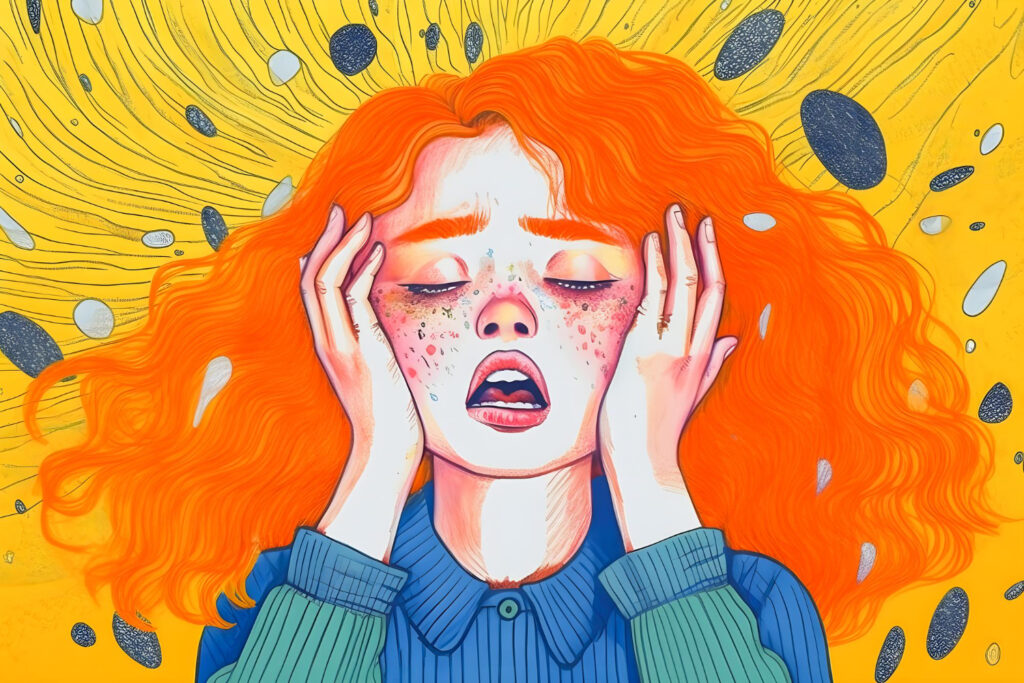
Historically, many neurodiverse conditions were misunderstood and often mislabeled. Individuals exhibiting behaviours outside societal norms were frequently subjected to harsh treatments or institutionalisation. For example, autism was once blamed on “refrigerator mothers,” a debunked theory that attributed the condition to a lack of maternal warmth.
Similarly, dyslexia was often mistaken for laziness or lack of intelligence, leading to unfair educational practices. It wasn’t until the late 20th century that a more nuanced understanding began to emerge, recognising these conditions as neurological differences rather than moral or intellectual failings.
The rise of the neurodiversity movement in the 1990s marked a significant shift in perspective. Advocates pushed for recognition of the value that neurodiverse individuals bring to society, leading to increased research, better educational strategies, and more supportive legislation.
8. Strengths of Neurodiverse Brain Types
Neurodiverse individuals often possess unique strengths and abilities that can be highly beneficial in various contexts. For example:
- Autistic individuals may have exceptional attention to detail, strong memory skills, and the ability to focus intensely on areas of interest.
- People with ADHD might exhibit high levels of creativity, problem-solving skills, and energy. They may thrive in fast-paced environments that require quick thinking.
- Those with dyslexia often excel in visual thinking and may have strong spatial reasoning skills, making them adept in fields like engineering, design, or architecture.
Companies are increasingly recognising these strengths. For instance, several technology firms have programs specifically aimed at recruiting and supporting neurodiverse talent, understanding that diverse teams can drive innovation and success.
9. Challenges and Misconceptions
Despite the strengths associated with neurodiversity, individuals often face significant challenges. Misconceptions and stereotypes can lead to stigmatisation, social isolation, and discrimination.
Common misconceptions include:
- Equating neurodiversity with low intelligence: Being neurodiverse does not correlate with intelligence levels. Many neurodiverse individuals are highly intelligent and capable.
- Assuming all neurodiverse people are the same: There is immense variability within neurodiverse conditions. Stereotyping can prevent individuals from receiving personalised support.
- Believing neurodiverse individuals cannot succeed in certain environments: With appropriate accommodations, neurodiverse individuals can thrive in any setting.
Challenges also arise from environments that are not accommodating. Sensory overload, rigid schedules, or lack of understanding from peers and superiors can exacerbate difficulties. Mental health struggles, such as anxiety or depression, may also occur due to prolonged stress and lack of support.
10. The Role of Society in Supporting Neurodiversity

Society plays a crucial role in enabling neurodiverse individuals to reach their full potential. This includes:
- Education Systems: Schools can implement inclusive teaching strategies, provide accommodations like extra time on tests, and incorporate assistive technologies.
- Workplaces: Employers can foster neurodiverse-friendly environments by offering flexible work arrangements, providing clear communication, and promoting awareness among staff.
- Legislation and Policy: Laws like the Equalities Act require reasonable adjustments to support disabled employees, but enforcement and awareness are key.
- Community Support: Social programs and support groups can offer resources and a sense of belonging.
By actively working to remove barriers and educate others, society can create spaces where neurodiverse individuals are valued and can contribute meaningfully.
11. Why Language Matters
The words we use shape perceptions and attitudes. In discussions about neurodiversity, language can empower or marginalise individuals.
- Person-First Language: Phrases like “person with autism” emphasise the individual before the condition.
- Identity-First Language: Terms like “autistic person” embrace the condition as an integral part of one’s identity.
Preferences for language can vary among individuals and communities. It’s important to respect personal choices and use language that individuals prefer.
Avoiding derogatory terms and stereotypes is also important. Using respectful and accurate language promotes understanding and reduces stigma.
12. The Future of Neurodiversity
As awareness grows, there’s potential for significant positive change:
- Increased Representation: Media and literature are beginning to include more neurodiverse characters and stories, which can foster understanding and acceptance.
- Advancements in Research: Ongoing studies aim to better understand neurodiverse conditions, leading to improved support and interventions.
- Policy Changes: Advocacy efforts may result in stronger protections and more resources for neurodiverse individuals.
- Technological Innovations: Assistive technologies and apps can provide support in daily tasks, communication, and learning.
The future holds the promise of a society where neurodiversity is fully embraced, and differences are seen as assets that enrich communities.
13. Conclusion: Embracing Cognitive Diversity
Embracing neurodiversity means recognising and valuing the full range of human cognition. It involves shifting perspectives from seeing differences as deficits to appreciating the unique contributions each person can make.
By fostering inclusivity, challenging misconceptions, and advocating for supportive environments, we can create a world where everyone has the opportunity to thrive.
Celebrating neurodiversity enriches society as a whole, driving innovation, compassion, and a deeper understanding of what it means to be human.
Highlights from October 2024
Our Event For World Mental Health Day
 We hosted a special event to celebrate World Mental Health Day, with this year’s theme centered on “Mental Health in the Workplace.” The event featured a fantastic lineup of contributors, each helping make the day a success.
We hosted a special event to celebrate World Mental Health Day, with this year’s theme centered on “Mental Health in the Workplace.” The event featured a fantastic lineup of contributors, each helping make the day a success.
Our focus was on wellness and holistic therapies, offering Reiki sessions, art therapy, and Indian head massages, which everyone enjoyed and fully embraced.
Staff Spotlight
 We’re excited to welcome our new Senior Support Workers, Cai Phillips and Daniel Penpraze, to Bellwave House. Both have started settling well into their roles, bringing enthusiasm and dedication to our team.
We’re excited to welcome our new Senior Support Workers, Cai Phillips and Daniel Penpraze, to Bellwave House. Both have started settling well into their roles, bringing enthusiasm and dedication to our team.
We look forward to working together as they grow in their positions and contribute to the positive environment we strive to maintain. With their support, we’ll continue making Bellwave House an exceptional place to work and a warm, caring home for our residents.
Bellwave Cottage
The Cottage has been buzzing with activity recently! For World Mental Health Awareness Day, all residents joined in, each in their own unique way. MB openly shared his personal experiences, discussing self-harm, coping strategies, and its effects. TM took part by trying out the various therapies on offer, while PW enjoyed the social interactions of the event.
MB also attended the Cancer Awareness event at the Corner, where he helped out in the kitchen and got involved in activities that highlighted cancer awareness.
As Halloween approaches, MB has already decorated the front window to welcome trick-or-treaters, with everyone looking forward to a spooky movie night to top off the festivities.
TM, a devoted Liverpool fan, has been thrilled by his team’s great start to the season, catching games at the local pub and cheering them on with fellow fans.
Lastly, the much-anticipated bathroom refurbishment is complete, and it has made a real difference. The Cottage residents would like to thank everyone involved in both the kitchen and bathroom upgrades.
Bellwave House
This month, residents enjoyed pool, quizzes, choir, and celebrated AD and GB’s birthdays. Halloween prep included decorating and pumpkin picking, with board games and activities alongside friends from the Corner. We also marked World Mental Health Day and raised funds for Breast Cancer Awareness.
A special congratulations to GW for his progress in independent living skills, leading to an offer for less intensive supported living. Since joining Bellwave House a year ago, GW has settled in well and is now reapplying for his driver’s license, with hopes to return to work. Well done, GW!
Bellwave Apartments 1
We’re excited to welcome a new resident moving in on October 29th, with TC, who has been visiting twice weekly, eager to join Serendipity.
VJ has enjoyed nature walks around the Waun, attended the Balloon Release for JK, and participated in Breast Cancer Awareness events. She’s also loved seeing Halloween decorations on her walks. Residents recently enjoyed their first Sunday dinner prepared by staff since Easter.
Apartment 1 will host a Halloween Decoration Making activity on October 25th, led by our new Activities Coordinator, Victoria Hanman. The apartment’s communal areas also received a fresh coat of paint, much to everyone’s delight.
Bellwave Corner
Bellwave Drive warmly welcomes CD, who has settled in well and is enjoying the company of other residents. A music lover, CD has been playing his guitar, filling the home with his tunes to the delight of both residents and staff.
JEP has been thrilled with his recent purchases, especially his new PS5 and AirPods. He’s set everything up in his room and even invited staff to join him in some action games.
With his extensive tech knowledge, JEP has been sharing insights about game sounds and resolution, teaching staff along the way.
AE has been keeping active with swimming and sauna sessions, describing them as mini spa days. She’s also been busy baking for everyone, even preparing a Sunday lunch for staff and residents.
AE has taken an active role in our co-production efforts, helping to organize the Halloween party.
Recently, everyone enjoyed a visit to the pumpkin patch, bringing back pumpkins to carve for Halloween. Residents have loved joining in on activities held by other projects as well.
Bellwave Drive
DW moved in on October 11 and is settling in well, enjoying a pool game with NW (which NW won!).
He’s planning a trip to IKEA for new furniture and looking forward to painting his room to make it his own. He recently loved a trip to McArthur Glen, especially the candle shop, and plans to join the local gym soon.
NL is currently on holiday in New York with his parents, and we’re excited to hear all about it when he returns.
NW continues to enjoy pool and weekly quizzes at Bellwave House, while MF plans to join DW at the gym and is also planning a trip to Cardiff for Christmas shopping.
MF and NW enjoyed a relaxing well-being afternoon at Bellwave Apartments and attended the Mental Health Day event in Porthcawl.
All Bellwave Corner residents joined the Breast Cancer Awareness event, with games, food, and informative sessions on breast health. We also had a board game afternoon, with intense rounds of Jenga and Scrabble enjoyed by all.
Understanding ADHD
Introduction
Attention-Deficit/Hyperactivity Disorder (ADHD) is often misunderstood, with many misconceptions surrounding the condition. From stereotypes to social stigmas, it can be challenging to separate fact from fiction.
Here we will do our best to explore the realities of ADHD, address common myths, and highlight how our understanding of the condition has evolved over time.
What is ADHD?

ADHD is a neuro-developmental disorder that affects both children and adults. ADHD is characterised by patterns of inattention, hyperactivity, and impulsivity that interfere with daily functioning or development.
There are three main types of ADHD:
- Combined Presentation (Inattention + Hyperactivity-Impulsivity)
- Predominantly Inattentive Presentation
- Predominantly Hyperactive-Impulsive Presentation
Inattention includes symptoms like difficulty sustaining attention, making careless mistakes, and being easily distracted. Hyperactivity and impulsivity involve excessive fidgeting, difficulty staying seated, talking excessively, and interrupting others.
ADHD in Children vs. Adults
ADHD is often recognised in childhood, but many people do not outgrow their symptoms. In fact, 65% of children diagnosed with ADHD continue to experience impairments into adulthood. While hyperactivity may decrease with age, adults may experience restlessness and difficulty with sustained attention.
ADHD can manifest differently as people age. For children, it may show up as an inability to sit still or focus on tasks. Adults, on the other hand, may struggle with staying organised or managing their responsibilities.
For more information on the differences between childhood and adult ADHD check out this article.
Diagnosing ADHD: Key Criteria and Misconceptions
One of the biggest misconceptions about ADHD is that it is synonymous with hyperactivity. In reality, many people with ADHD may primarily struggle with inattention, particularly in adults. Diagnosis is based on a number of criteria, which includes at least five symptoms for adolescents and adults or six symptoms for children from either the inattention or hyperactivity-impulsivity categories.
Common symptoms include:
- Trouble organising tasks or activities
- Frequently losing items needed for daily activities (e.g., keys, paperwork)
- Difficulty remaining seated in situations where it is expected
- Avoiding tasks that require prolonged mental effort
Prevalence and Gender Differences in ADHD

Globally, the prevalence of ADHD in children is around 5%, with adult prevalence estimated between 3% and 4%. Historically, ADHD has been diagnosed more frequently in boys than girls. However, recent studies suggest that ADHD in girls may be under-diagnosed, as they often exhibit different symptoms, such as inattention without hyperactivity, which is less disruptive and therefore less likely to be recognised.
Why ADHD might be missed in girls:
- Girls with ADHD tend to be daydreamers and often do not exhibit the more obvious hyperactivity seen in boys.
- They may internalise their struggles, leading to conditions like anxiety or depression.
Common Myths About ADHD
-
“ADHD didn’t exist in my day”
- ADHD has been recognised for centuries, with references as early as 1775. Over time, our understanding of the disorder has evolved, but its presence in history is well documented.
-
“ADHD is just an excuse for laziness”
- This is a harmful misconception. ADHD is a medical condition that affects attention, organisation, and self-control. Individuals with ADHD often work harder than neurotypical individuals to manage daily tasks.
-
“Everyone gets distracted sometimes, so doesn’t everyone have a little ADHD?”
- While it’s true that everyone experiences distractibility, ADHD is a persistent and pervasive issue that significantly affects life across multiple settings (work, school, home).
What Causes ADHD?
There is no single cause for ADHD. Instead, it is thought to arise from a complex interaction of genetic, neurological, and environmental factors.
- Genetic Factors: Research suggests that ADHD runs in families, with genetic factors accounting for 70-80% of the risk for developing ADHD.
- Neurological Factors: Studies show differences in brain structure and function, particularly in areas controlling attention and impulse regulation.
- Environmental Factors: Exposure to lead, prenatal drug use, and low birth weight are associated with a higher risk of developing ADHD. Additionally, traumatic or stressful life events can trigger the onset of symptoms, particularly in those predisposed to the condition.
The Impact of ADHD: More Than Just Inattention
The effects of ADHD go beyond just being inattentive or fidgety. Individuals with ADHD often face challenges in relationships, academic achievement, and employment. Symptoms like impulsivity can lead to risky decision-making, while inattention may result in missed deadlines or overlooked details.
ADHD is a debilitating disorder that impacts daily functioning and quality of life. It can lead to low self-esteem, poor time management, and challenges with emotional regulation.
Treatment Options for ADHD

ADHD is highly treatable. A multimodal approach is often most effective, combining behavioural therapies, lifestyle changes, and medication. Common treatments include:
- Cognitive Behavioural Therapy (CBT): Helps individuals manage their symptoms by changing negative thinking patterns.
- Medication: Stimulants like Ritalin and Adderall are commonly prescribed, along with non-stimulants like Strattera.
- Lifestyle Modifications: Creating structure, setting reminders, and using organisational tools can help manage daily tasks.
Why It’s Important to Dispel Stigmas Around ADHD
Stigma around ADHD can be damaging. Misconceptions that ADHD is merely a “behavioural issue” or an “excuse” undermine the very real challenges individuals face. By dispelling myths, we can foster a better understanding of the condition and ensure those with ADHD receive the support they need.
It’s crucial that ADHD is seen as a neurological condition, not a lack of discipline or intelligence.
Most importantly of all, it’s important that those who live with ADHD see it as something that is both serious and manageable. It’s only when you realise that disorders are simply describing patterns of behaviour. Once you know the patterns you can more effectively arrange your environment and interactions in order to compliment your “template”.
ADHD: A Trait for a Different Time? Thom Hartmann’s “Hunter vs. Farmer” Hypothesis

Let us consider an interesting take on the topic of ADHD.
In his book “Hunters in a Farmer’s World,” Thom Hartmann offers a fascinating and alternative perspective on ADHD. Hartmann hypothesises that ADHD is not merely a disorder but rather a neurological trait that would have been advantageous in earlier human societies.
According to Hartmann, individuals with ADHD might have thrived as hunters in prehistoric times, excelling in tasks that required quick decision-making, hyper-focus, and a readiness to react swiftly to environmental changes.
The Hunter vs. Farmer Hypothesis
Hartmann’s hypothesis posits that ADHD traits, such as impulsivity, distractibility, and hyperactivity, would have been highly beneficial for early humans who lived as hunters. In contrast, traits associated with farming—such as patience, long-term planning, and a steady focus—are more in line with modern societal expectations. The challenges that individuals with ADHD face today, according to Hartmann, stem from the fact that we now live in a predominantly “farmer” society, where these traits are less valued and often seen as disruptive.
Hartmann’s model draws on evolutionary psychology to explain that hunters needed to be constantly alert to potential dangers or opportunities, scanning their surroundings for threats or prey. The ability to shift focus quickly, act on instinct, and maintain high energy levels was essential for survival. These characteristics are mirrored in ADHD traits like short attention spans, high energy, and the ability to hyper-focus on something of immediate interest.
Historical and Anthropological Sources
Hartmann references a variety of anthropological and historical sources to support his claims, noting that traditional hunter-gatherer societies valued traits that we now associate with ADHD. He cites studies on modern hunter-gatherer tribes, such as the San people of the Kalahari Desert, whose way of life requires vigilance and adaptability. These studies suggest that members of such societies exhibit traits similar to those labelled as ADHD in the modern world.
A Strength, Not a Disorder?
Hartmann argues that ADHD should not necessarily be seen as a disorder, but rather as a context-dependent trait. In a society that values long-term planning, structure, and methodical work—traits of the “farmer’s world”—ADHD traits may indeed seem maladaptive. However, in settings that require quick responses, creativity, and risk-taking, such as entrepreneurship or emergency services, ADHD traits can be an asset.
While Hartmann’s theory has not been universally accepted, it has gained traction as a more positive and neurodiverse view of ADHD. His work invites us to reconsider how we view ADHD and whether societal expectations rather than inherent deficiencies are what truly make ADHD difficult to manage in the modern world.
Criticism and Further Research
Critics of Hartmann’s hypothesis argue that more empirical research is needed to fully substantiate the idea that ADHD is an advantageous evolutionary trait. However, his perspective aligns with a growing body of research that supports the idea of neurodiversity—the notion that brains function in a variety of ways, and that these differences should be valued rather than pathologised.
In conclusion, Hartmann’s “Hunters in a Farmer’s World” offers an insightful and refreshing look at ADHD, challenging the conventional notion that it is simply a disorder to be “fixed.” Instead, he encourages us to recognize the potential strengths of ADHD traits, especially in environments that reward creativity, quick decision-making, and flexibility.
Conclusion: ADHD is Not “Just a Trend”
ADHD is not a passing trend or the result of modern technology. It has been present throughout history, and though our understanding of it continues to evolve, it remains a serious condition that affects millions of people worldwide. Whether you or someone you know is living with ADHD, the key is understanding, compassion, and proper treatment.
Highlights from September 2024
Remembering JK
 We have had the unfortunate passing of one of our residents (JK). He will be deeply missed Here is a small message from each resident about JK.
We have had the unfortunate passing of one of our residents (JK). He will be deeply missed Here is a small message from each resident about JK.
IW: “JK was like a son to me and I miss him and his cheeky ways”
MF: “I hope JK is in heaven now, he will be dearly missed”
NW: “I will miss him”
NL: “It’s a shame he is gone”
He was a much admired friend to his housemates and staff.
New Domiciliary Community / Office Lead
 Meet our new Domiciliary Community and Office Lead, Annamarie Osgood!
Meet our new Domiciliary Community and Office Lead, Annamarie Osgood!
Annamarie began her journey with Serendipity in 2015 as a domiciliary care assistant and has progressed through Serendipity to her current role.
Annamarie’s dedication and growth showcase how we support career development within our team. She’s excited about her new role and continues to be a vital part of Serendipity.
Staff Updates:
Bellwave House bids farewell to Calvin Rogers, Senior Support Worker, after nearly three years of dedicated service. Calvin was a valued member of our team and will be greatly missed.
We also say goodbye to Richard Gregory, Assistant Home Lead, and Dan Ring, Home Lead, at Bellwave House. Dan has been with Serendipity for six years, and Richard for three, both making significant contributions during their time with us. Their presence and dedication will be deeply missed.
Bellwave Cottage
There has been some disruption at the Cottage with the bathroom renovation in full swing, but residents have kept busy and maintained their daily routines.
PW had a wonderful birthday with a surprise visit from his dad, who brought a card, presents, a cake, and stayed for tea. PW was thrilled, and it really made his day, which ended with Sunday lunch at the local pub. He also enjoyed this year’s Elvis Festival, braving the crowds and getting into the music and fancy dress, which he looks forward to each year.
TM has kept active, returning to the Bridge for maths and English, going to the gym, swimming, and taking long coastal walks as part of his fitness routine. He’s already planning ahead for Christmas after some recent Home Leave.
MB continues to thrive at Slimming World, losing another seven and a half pounds, bringing his total weight loss to nearly two stone. He’s stayed active with swimming, walking, gym sessions, and cycling. MB has also helped with special event projects and enjoyed a two-night Home Leave with his mum, which he really appreciated.
Bellwave House
Residents have been enjoying regular activities like pool, quizzes, and choir this month. Some even attended “The Big Cheese,” an annual celebration of cheese and motorbikes.
One of our residents, GB, had an exciting experience handling a tarantula and enjoyed the sunny day out.
Bellwave House is pleased to welcome a new resident. He has transitioned from a more secure environment to a less restrictive one, gaining greater independence. Originally from the area, he feels like he’s returned home and has settled in well. He enjoys daily outings for a cooked breakfast, visits from family and friends, and is very happy in his new surroundings.
Bellwave Apartments 1
This month, we said goodbye to our wonderful resident DC, who is moving on to a new home. She has spent the last two years with us at Serendipity, and she will be greatly missed by all the staff and residents.
VJ has been active this month, enjoying the pool tournament, weekly quiz, and participating in the National Day of Arts. We’re also excited to welcome Victoria Hanman as the new Activities Coordinator for Apartment 1. She has already done a fantastic job assisting the previous coordinator and is eager to dive into her new role.
Bellwave Apartments 2
It’s been a busy month upstairs as residents embrace autumn. Dionne Parry, our wonderful activity coordinator, continues to bring positivity, organising fun activities and helping explore new interests. She also supported other homes with events like the European Food Day at Bellwave Cottage.
This month, we hosted a National Day of Arts with an Elvis theme to celebrate the Porthcawl Elvis Festival.
SD continues to impress with his guitar skills, collaborating with support worker Mark Williams. ND has enjoyed trips to Cardiff and Porthcawl beach, where he’s even been mistaken for Daniel Craig while swimming!
Kelsea, our new home lead, has settled in well and shared feedback from the residents, who describe the staff as “amazing” and “lovely,” which is wonderful to hear.
Thank you to Jamie, Stacey, and Paiton for organising Positive Behaviour Support training, which the staff found engaging and enjoyable.
Bellwave Drive
At Bellwave Drive, we are thrilled to congratulate Elisabeth James on her promotion to Senior Support Worker. Elisabeth has worked incredibly hard and is a valued member of our team. She is also our Activities Coordinator and is excited to continue growing with Serendipity.
Staff recently completed PBS and Autism training, which was especially beneficial given that Bellwave Drive primarily supports young adults with autism. The team has gained valuable knowledge and skills to enhance the quality of life for our residents.
PM has been enjoying his independence, taking the bus to Porthcawl and exploring his new mobile phone. He’s learning TikTok with the help of other residents and loves DJing to Clubland Classics. He’s also been focusing on his physical health with short walks around the area.
Dan has been active, making smoothies with AE, engaging in community activities, and attending courses at the ARC Centre.
JEP has made great strides in accessing the community independently, impressing his Advocate with his progress.
AE has been honing her cooking skills, treating everyone to delicious meals and smoothies.
Bellwave Corner
We are saddened to announce the passing of resident JK, a cherished friend to both housemates and staff. He will be deeply missed.
At Bellwave Corner, residents are staying positive by attending the weekly quiz at Bellwave House and pool tournaments in Porthcawl. MF is excited for his upcoming trip to Cardiff in November to see WICKED.
Staff recently benefited from Autism and ADHD training led by Jamie. The lounge has also been freshly painted, and residents are happy with the new look.








